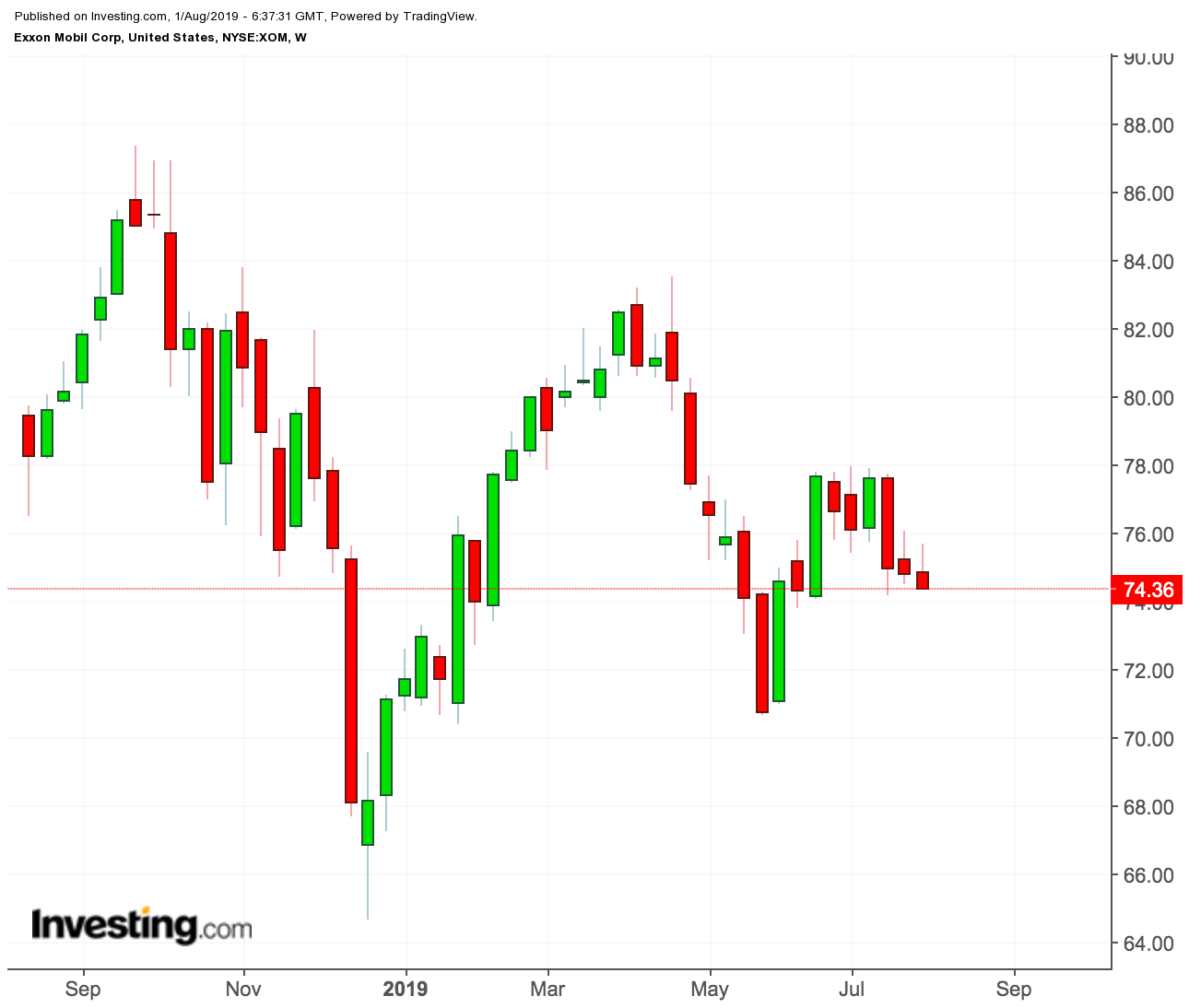- Reports Q2 2019 results on Friday, Aug. 2, before the open
- Revenue expectation: $64.85 billion
- EPS expectation: $0.7
Among U.S. oil and gas super majors, ExxonMobil (NYSE:XOM) is the least-loved by analysts and investors. Its shares have generally underperformed in both short- and long-term rallies over the past five years as its output declined and the company lacked direction.
The company in April reported its worst refining performance in almost two decades. A surprise loss in its refining and chemical business lines, that Exxon typically relies on to generate cash flows when more volatile upstream businesses come under pressure, has made the company’s comeback from its 2018 slump more questionable.
In this context, the company’s second-quarter report tomorrow will be crucial, as investors look for signs for revival in its refining operations.

According to analysts’ consensus forecast, ExxonMobil will likely report a 12% decline in sales to $64.85 billion in Q2 from a year ago period. The profit is forecast to fall to $0.7 a share from $0.92 a year ago. The last time Exxon’s refineries lost money was 2009 and the first-quarter showing was the worst in data going back to 2001.
Prior to the refining setback, the outlook for Exxon was brightening as the oil giant attempted to rebound from a disastrous first half of 2018, during which oil and gas production reached the lowest in a decade.
Shares Under Pressure
Since hitting their yearly high of $83.49 in December, shares—which closed yesterday at $74.36—have fallen about 11%. During that period, its closest rival, Chevron (NYSE:CVX), held up its position and avoided losses.
Against this negative backdrop — in which the company is struggling to increase its output and the company’s cash-cow refining business is faltering — there is a little hope that Exxon will be able to outperform its rivals in the short-run.
But we remain quite optimistic about the company’s future growth. Exxon's CEO Darren Woods has taken a longer term approach to revive growth. He believes the oil industry needs a massive injection of fresh investment to meet the new challenges it faces, making this the wrong time to return cash to investors.
Woods has embarked on a $230 billion plan to revitalize the oil giant, targeting drilling opportunities around the world. These include shale wells in West Texas, natural gas export facilities in Papua New Guinea, a string of giant discoveries in the South American nation of Guyana, and developments in Mozambique and Brazil.
What’s impressive about Exxon is that it’s the only large cap U.S. oil producer whose cash flows cover dividends and a projected capital spending. We think that strength makes this stock a good candidate to buy to earn steadily growing income..
After the recent pullback, Exxon stock is now yielding about 4.62%, much higher than its past five-year average of about 3.5%. The company pays $0.87 a share quarterly payout, which has grown over 5% per annum in the past five years.
Exxon has increased its dividend each year, for more than 30 years in a row, despite operating in a highly volatile sector. This accomplishment says a lot about the quality of the company’s balance sheet and its ability to generate superior returns for shareholders.
Bottom line
If you’re looking for a solid dividend stock to stash in your portfolio, then ExxonMobil’s current weakness provides a good entry point. It might even get better after tomorrow’s earnings.
